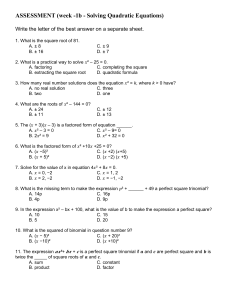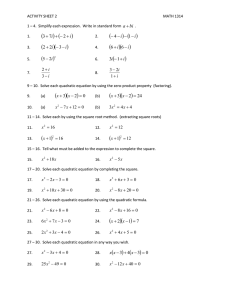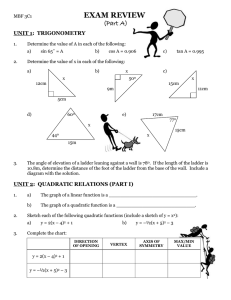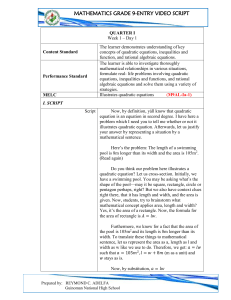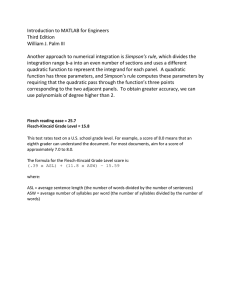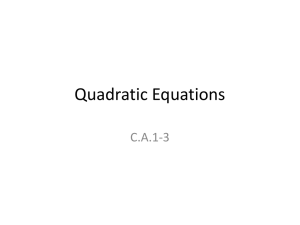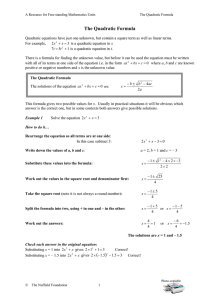LESSON 3 – SOLVING QUADRATIC EQUATIONS
advertisement
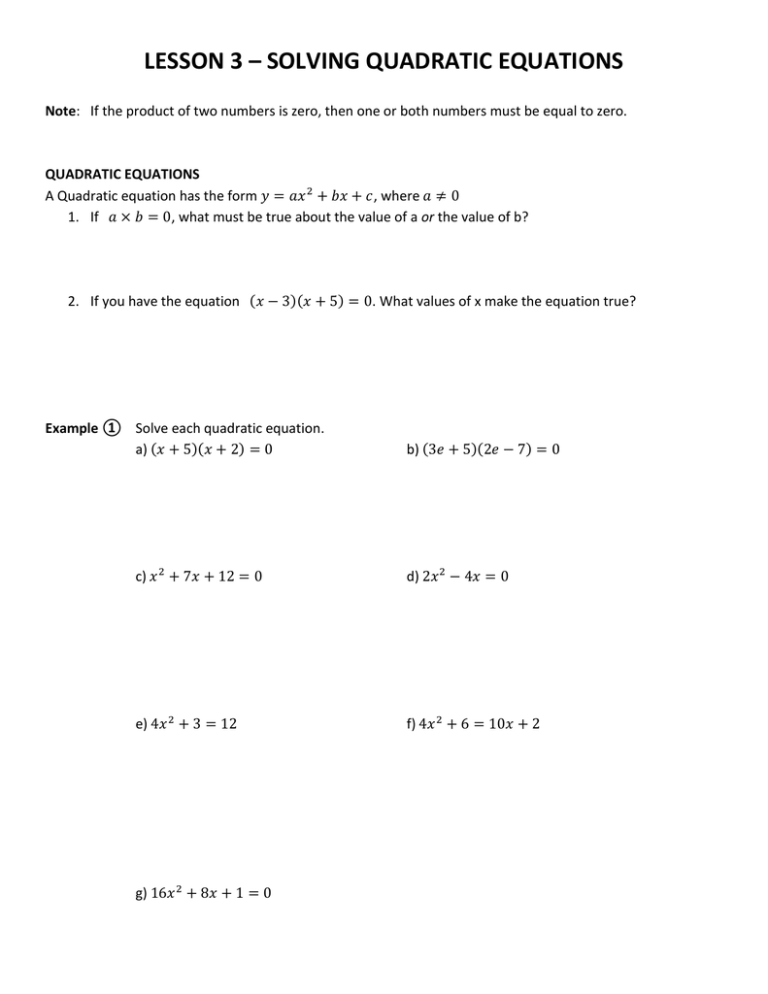
LESSON 3 – SOLVING QUADRATIC EQUATIONS Note: If the product of two numbers is zero, then one or both numbers must be equal to zero. QUADRATIC EQUATIONS A Quadratic equation has the form 𝑦 = 𝑎𝑥 2 + 𝑏𝑥 + 𝑐, where 𝑎 ≠ 0 1. If 𝑎 × 𝑏 = 0, what must be true about the value of a or the value of b? 2. If you have the equation (𝑥 − 3)(𝑥 + 5) = 0. What values of x make the equation true? Example ① Solve each quadratic equation. a) (𝑥 + 5)(𝑥 + 2) = 0 b) (3𝑒 + 5)(2𝑒 − 7) = 0 c) 𝑥 2 + 7𝑥 + 12 = 0 d) 2𝑥 2 − 4𝑥 = 0 e) 4𝑥 2 + 3 = 12 f) 4𝑥 2 + 6 = 10𝑥 + 2 g) 16𝑥 2 + 8𝑥 + 1 = 0 Example ③ A rectangle has dimensions 𝑥 + 8 and 𝑥 − 2. Determine the value of x that gives an area of 24 𝑐𝑚2 . 2 Example ④ Write a quadratic equation with roots of − 3 and 7 in: i) factored form ii) standard form





